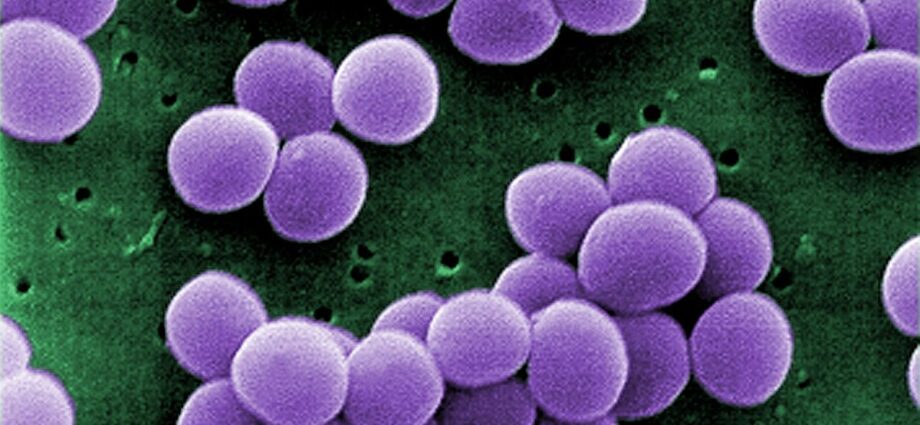Staphylococci
Staphylococci are Gram-positive cocci bacteria, which are commonly found in healthy people, usually in the lining of the nose. The bacteria can then colonize other areas, via the hands, and in particular wet parts of the body such as the armpits or the genital area.
Among the forty types of existing staphylococci, Staphylococcus aureus (Staphylococcus aureus) is most often found in infectious pathologies. This staph can cause serious infections.
In addition, it is one of the main culprits of nosocomial infections, that is to say, contracted in a hospital environment, as well as food poisoning.
Staphylococci are the cause of skin conditions, most often benign such as impetigo.
But, Staphylococcus aureus can lead to more serious infections like some forms of pneumonia and bacterial meningitis. This type of bacteria is also one of the main causes of food poisoning linked to cases of gastroenteritis.
When Staphylococcus aureus develops in the bloodstream, it can settle in the joints, bones, lungs, or heart. The infection can be very serious and sometimes even fatal.
Prevalence
About 30% of healthy people have Staphylococcus aureus permanently in their body, 50% intermittently and 20% never carry this bacteria. Staphylococci are also found in animals, in the earth, in the air, on food or everyday objects.
Transmission
Staph-like bacteria are spread in several ways:
- From one individual to another. Skin infections are contagious if the lesion of the skin is purulent (= presence of pus).
- From contaminated objects. Certain objects can transmit the bacteria such as pillow cases, towels, etc. Since staphylococci are relatively resistant, they can survive for several days outside the body, even in very dry places and at high temperatures.
- When ingesting toxins. Foodborne illnesses are contracted by eating foods where staphylococci have multiplied and released toxins. It is the ingestion of the toxin that leads to the development of the disease.
Complications
- Sepsis. When bacteria multiply in a specific part of the body, on the skin or a mucous membrane, they can pass into the bloodstream and multiply there, leading to a generalized infection called sepsis. This infection can lead to a severe state of shock called septic shock, which can be life-threatening.
- The secondary streptococcal centers. Sepsis can cause the bacteria to migrate to several places in the body and cause foci of infection in the bones, joints, kidneys, brain or heart valves.
- Toxic shock. The multiplication of staphylococci leads to the production of staphylococcal toxins. These toxins, when they pass into the blood in large quantities, can cause toxic shock, sometimes fatal. It is this shock (toxic shock syndrome or TSS) that is discussed in the leaflets for users of tampons during menstruation.










